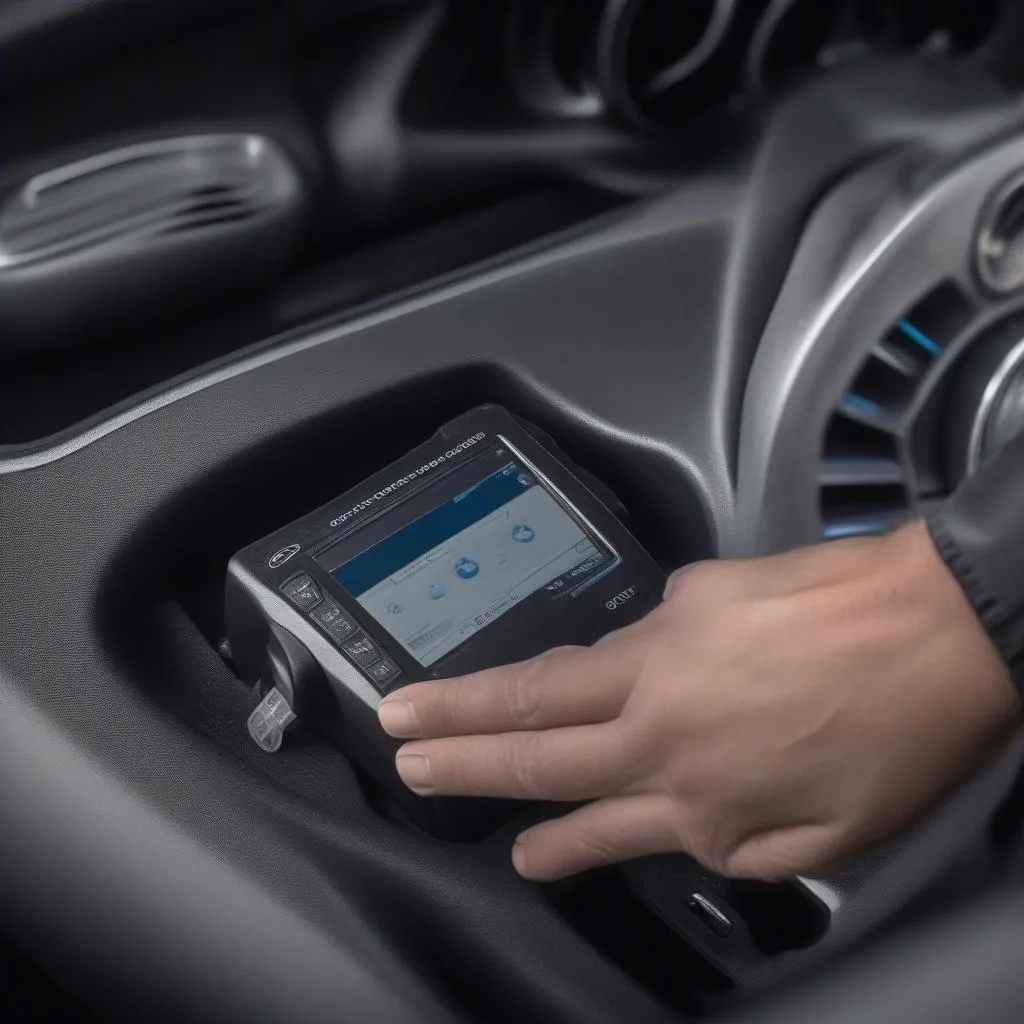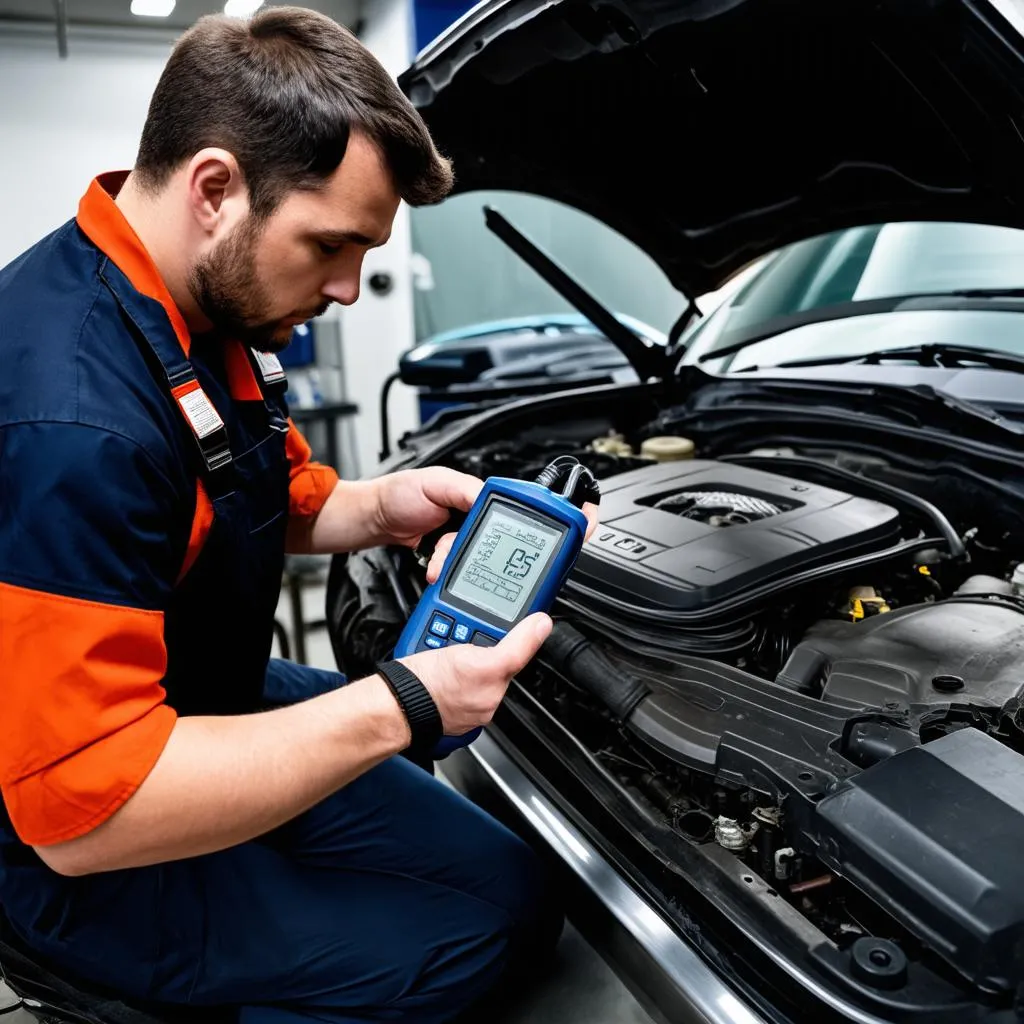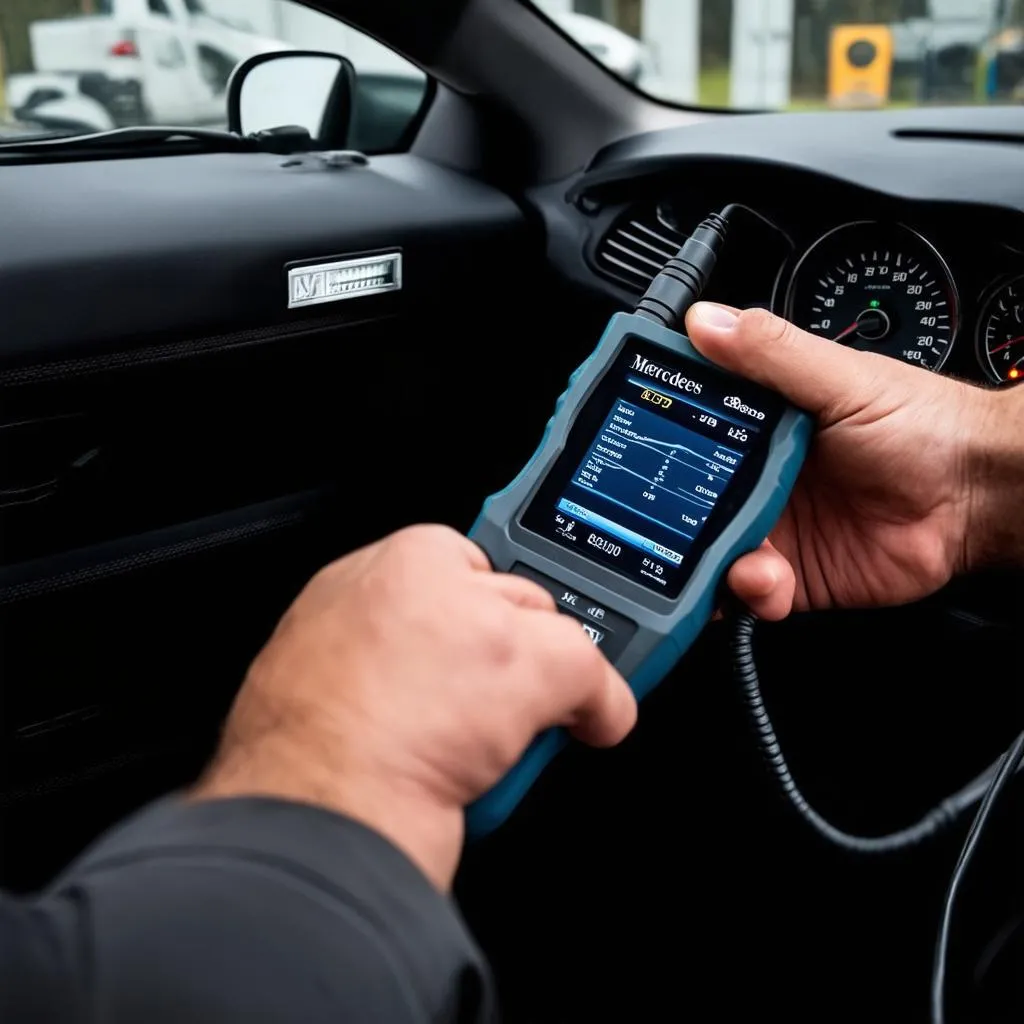Is your Mercedes 2001 SLK’s shift light acting up? You’re not alone! This is a common issue for SLK owners, and thankfully, it’s usually a straightforward fix. This guide will walk you through the common causes and solutions, helping you get your SLK back in gear in no time.
Understanding the Shift Light
Before we dive into the fixes, it’s important to understand the purpose of the shift light. This handy indicator on your dashboard lights up to signal the optimal time to shift gears, maximizing fuel efficiency and engine performance.
 Mercedes SLK Dashboard
Mercedes SLK Dashboard
Common Causes of Shift Light Malfunctions
Several issues could be causing your shift light to malfunction. Here are some of the most common culprits:
- Faulty Shift Solenoid: This component controls the flow of transmission fluid, and if it’s malfunctioning, it can disrupt the shift light’s signal.
- Wiring Issues: Loose or damaged wiring between the transmission control unit (TCU) and the instrument cluster can also lead to a faulty shift light.
- Transmission Control Unit (TCU) Problems: In some cases, a faulty TCU might be the root of the problem, requiring reprogramming or replacement.
- Instrument Cluster Malfunction: While less common, a problem with the instrument cluster itself can also cause the shift light to act up.
Diagnosing the Problem
Pinpointing the exact cause requires a bit of investigation:
- Check for Warning Lights: Is your Check Engine light on? If so, it’s crucial to read the error codes using an OBD-II scanner. This can provide valuable clues about the underlying issue.
- Inspect the Wiring: Carefully examine the wiring harness connecting the TCU and the instrument cluster for any signs of damage, looseness, or corrosion.
- Consider the Symptoms: Is your shift light constantly on, blinking erratically, or completely dead? These details can help narrow down the potential causes.
 OBD2 Scanner Mercedes SLK
OBD2 Scanner Mercedes SLK
Tools and Equipment You Might Need
- OBD-II Scanner: For reading error codes and monitoring transmission data.
- Multimeter: To test the continuity of wiring and the voltage of electrical components.
- Basic Hand Tools: Such as screwdrivers and sockets for accessing wiring harnesses and components.
Fixing the Shift Light: A Step-by-Step Guide
Note: This guide provides general instructions. Always refer to your vehicle’s repair manual for specific procedures and safety precautions.
- Read Error Codes: If the Check Engine light is on, start by reading the error codes using an OBD-II scanner. This can provide valuable insights into the problem’s source.
- Inspect and Repair Wiring: If the error codes point to a communication error or if you suspect wiring issues, carefully inspect the wiring harness connecting the TCU to the instrument cluster. Repair any damaged or loose wires.
- Test the Shift Solenoid: Use a multimeter to test the shift solenoid’s resistance and ensure it falls within the manufacturer’s specifications. If it’s faulty, replace it.
- Check the TCU: If the error codes indicate a TCU problem or the above steps don’t resolve the issue, the TCU might need reprogramming or replacement. Consult a qualified mechanic for this step.
- Inspect the Instrument Cluster: If other dashboard lights are also malfunctioning, the instrument cluster itself could be faulty and might need repair or replacement.


